Monoliths: A layman’s view
Ted Green MVO MBE
The Oxford dictionary says a layman is a ‘non-professional, non-expert’ with no need to live up to standards.
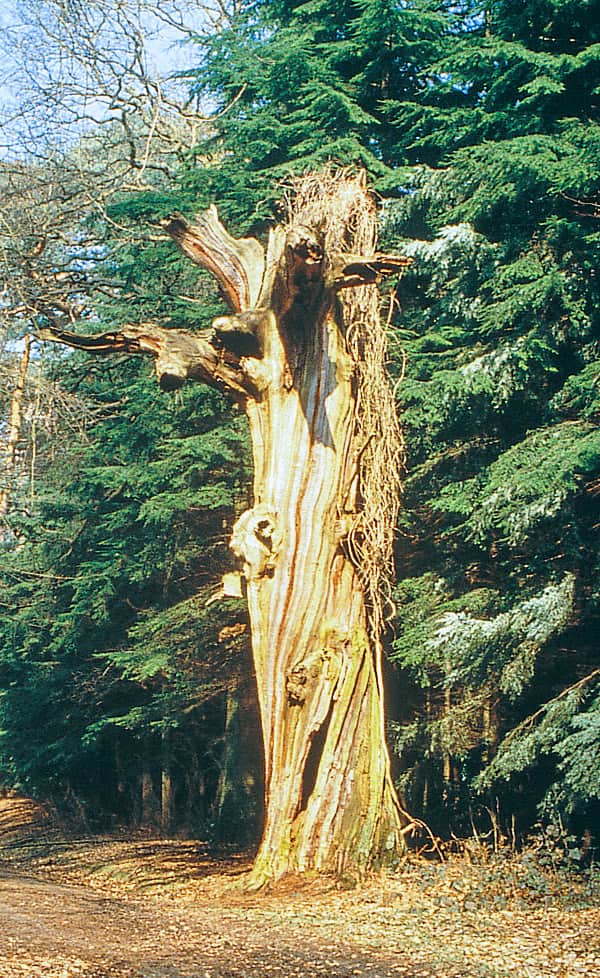
1. My experience with dead standing trees started at least 80 years ago, climbing them as a boy.
Therefore, and because I am fan of Dr Duncan Slater – no doubt like many others – and enjoy his very thought-provoking and interesting articles, I think I am allowed to comment on his two latest pieces in this magazine, especially as (until I am proved wrong) I believe that I was the first person to call a dead standing tree managed by arbs a monolith, and the idea originally came to me from the film 2001: A Space Odyssey.*
Duncan prefers to call managed dead standing trees snags and dislikes the term monoliths. However, Philip Wilson in ‘my bible’, The A–Z of Tree Terms, defines snags as stubs, and non-arboricultural and non-forestry dictionaries have included several other meanings for the word, even ‘debris snagged up in flowing water’ and ‘clothing torn or snagged up on thorns or barbed wire etc.’ Therefore, whilst I agree our common language is full of words that have several often completely different meanings, surely here is a case where in tree terms – and virtually confined to arboricultural use – a dead standing tree could be described using a much better term than snag.
Finding the right word
Philip Wilson’s A–Z defines a monolith as ‘a tree reduced to its main stem’ and in his definition it could still be alive. English dictionaries define a monolith as ‘a single block of stone, especially shaped like a pillar or monument, a large block of concrete or thing like a monolith being massive, immoveable or solid uniform.’ Mono obviously means single and lith is stone.
Surely all we have to do is find a simple descriptive term that can only refer to a managed dead standing tree? Let’s hope the ideas that follow inspire some thoughts from arbs. This sort of tree management belongs to the arb world and the arb world should claim professional ownership by finding the right term for it. As lith means stone, why not call a dead standing tree a mono-stub or mono-stump? Mono-trunk or mono-candle (French is chandele) are also options. Mike Ellison has suggested mono-ligna, mono-lignum, mono-lig or mono-stack.
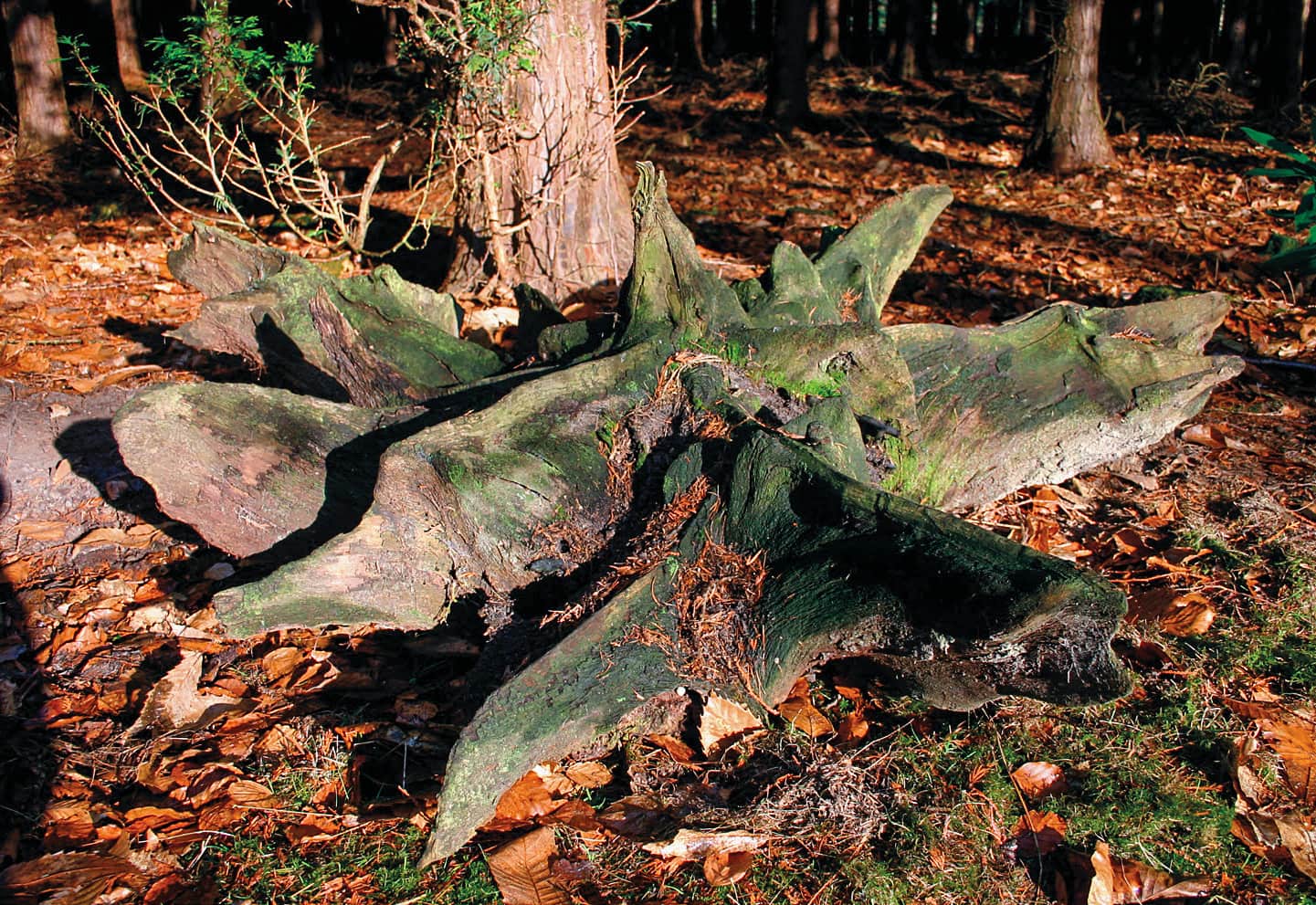
2. Oak root plate with what remained of the supporting root system after the tree had been standing dead for perhaps several decades.
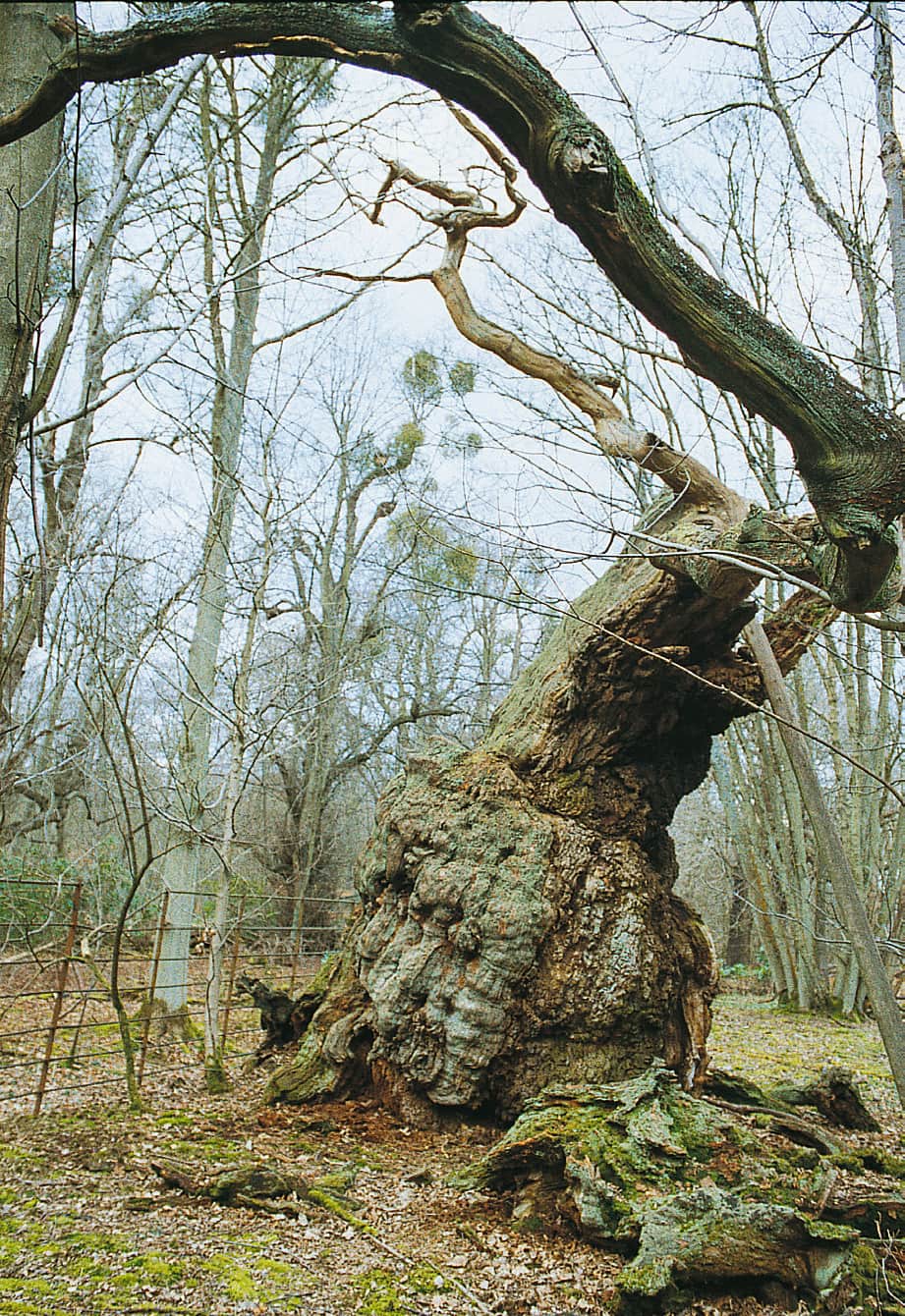
3. William the Conqueror’s Oak at Windsor, perhaps 1000 years old. How on earth can you call this part of our nation’s history a snag????
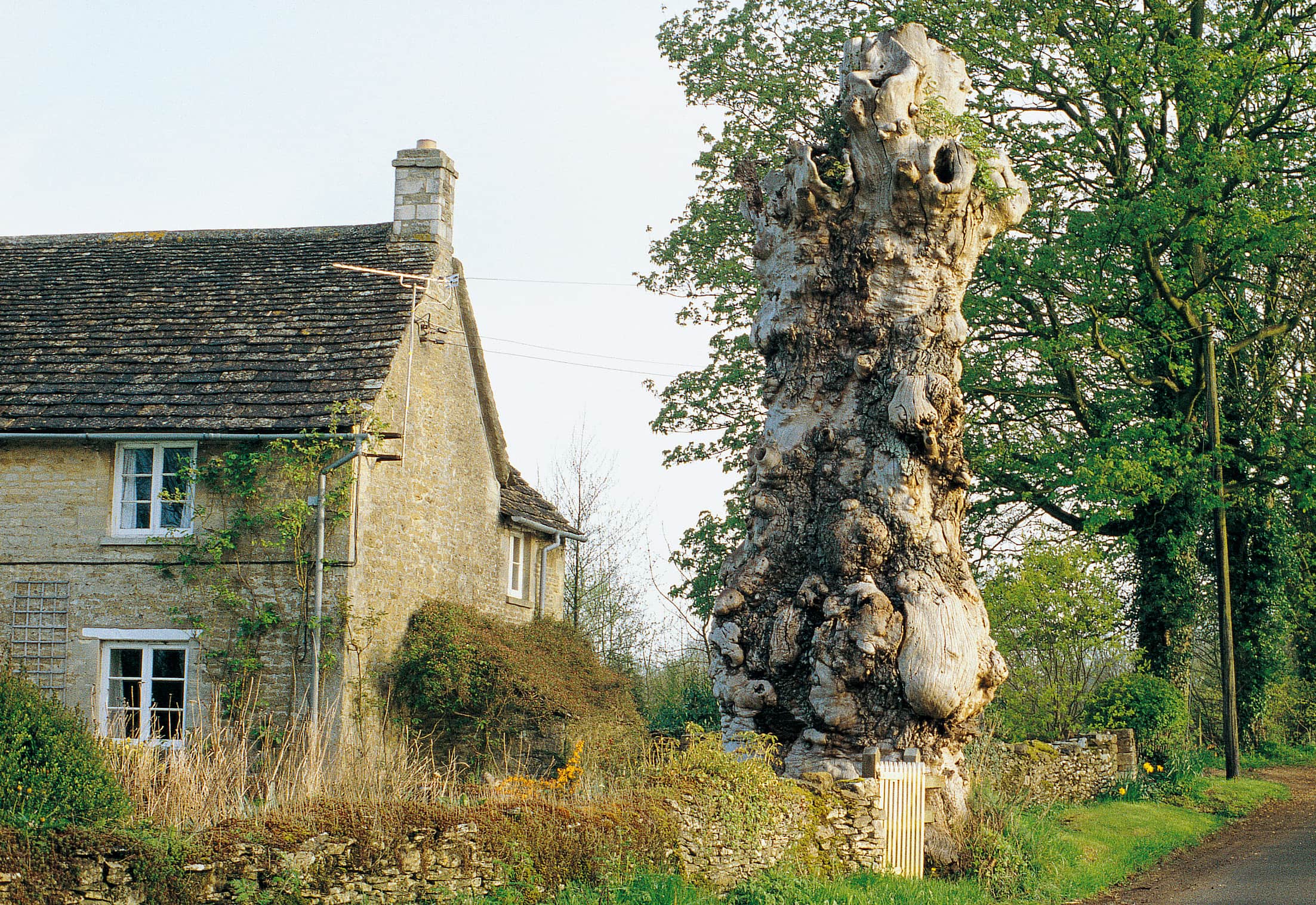
4. Ancient dead elm monolith. My bet is the occupants of the house who decided to leave this tree standing were very interesting people, considering the safety paranoia and mindless obsession with tidiness that prevail in the 21st century. Bring on the younger generations!
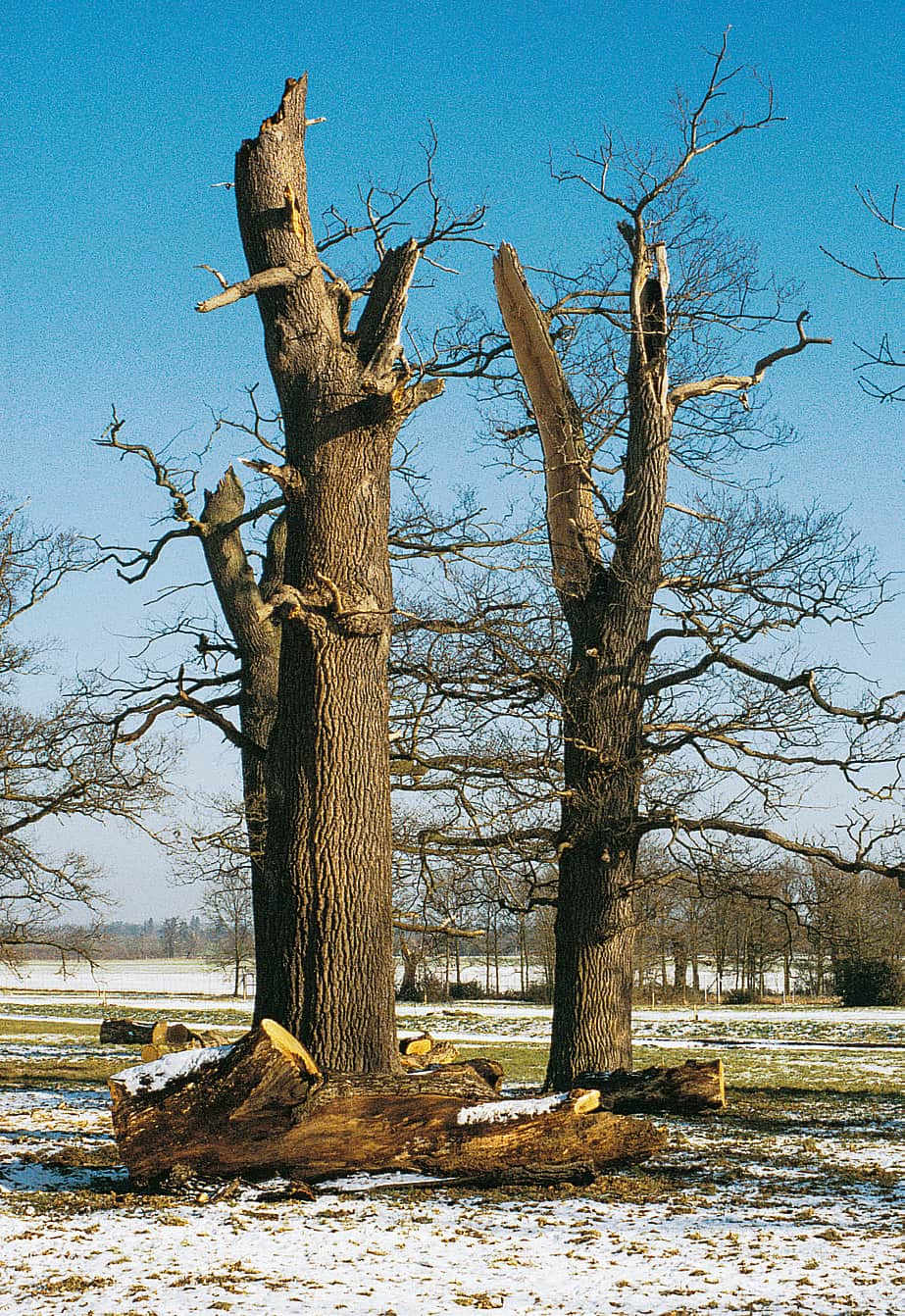
5. Dead standing oaks where Roy Finch did plunge cuts in limbs and Bill Cathcart’s team at Windsor then winched the limbs off to leave monoliths with reasonably natural-looking broken stub ends.
The importance of dead standing trees
My experience with dead standing trees started at least 80 years ago when I climbed into the dead hollow standing oak in photo 1 and collected either a barn or a tawny owl’s egg. In those days, all small boys living in the countryside collected birds’ eggs. The tree is still there today, and obviously the surrounding trees are now of a substantial size and possibly increasingly offer it some protection. Also, oak has durable heartwood and therefore it is most likely that any supporting dead roots will decay much slower than in other species.
Whilst we are on the subject, it is interesting to note how many arbs never differentiate between trees with heartwood and ripewood when it is quite obvious that the distinction can be very relevant in the case of dead standing trees, and the supporting root systems of conifers cannot be forgotten: it's more than likely they decay slowly like oak. Many picturesque scenes of the Scottish glens have dead ancient granny pines, bleached and seasoned, that regularly withstand very high winds.
Photo 2 shows an oak root plate with what remained of the supporting root system after the tree had been standing dead for perhaps several decades. It begs the question were such seasoned buttress roots used by early man as plough shears?
Sadly, Duncan’s pictures show trunks in which all the limbs have been removed by the very outdated method of flush cutting to the main stem (‘Towards guidance on snags’, ARB Magazine 198). I say ‘outdated’ because a different approach was developed as long ago as 1997. Bob Warnock, Manager of Ashstead Common for the Corporation of London, wanted to maintain dozens of dead standing ancient pollard oaks (which had been tragically killed in a series of bracken thatch fires over the years) for historical, conservation and health and safety reasons. He came up with the idea that when large limbs were reduced with the aim of increasing the stability of the trees, the work would not leave behind unnatural, stark, straight, flat, flush cuts, and he got arborist and wood sculpture Steve Radford to make the very first coronet-cut stub ends. Local people remarked on how they preferred the more natural look. Years on, very few arbs actually practise natural stub end cutting even in 2022!
This is interesting because when I remember the days that Jack Kenyon and other lecturers at Merrist Wood brought students to Windsor Park, I can still see young arbs cutting living branches and mimicking natural broken stub ends to the point where you could not tell the difference between the manmade and the natural versions. Why aren’t we seeing trees cut not like a surgeon would do but, where possible, as an art form? And before I hear the word cost, why not take a photo portfolio to show clients ALL that you are capable of?
Duncan makes an excellent case for retaining dead standing trees where possible and reminds me of the time soon after I got my job with Natural England in 1987 when I was tasked with promoting dead wood conservation using the trees at Windsor. I began making the dead wood educational trail with the help of volunteers like ex-Merrist Wood arb Barrie Embling. The trail has since been seen by many people and, importantly, discussions have flowed and ideas have been exchanged, and many implemented. A good example from early on in the process when the trail was just beginning to be developed is a conversation I had with a Swedish visitor who commented that Sweden had by far the greatest tree cover in Europe but it now had only one pair of white-backed woodpeckers remaining, presumably as a result of the forestry industry never leaving dead standing trees and continuing to follow the very outdated dogma (which persists even today through forestry sanitation) that if it’s dead or dying, it is a reservoir of pests and diseases. This approach never considers dead standing trees as reservoirs of natural biological control that have can have a considerable influence on pests and diseases. If that natural biological control didn’t exist, there’s a chance we wouldn’t have a tree left.
Perhaps through Duncan’s articles and the work of other ‘Thinking Arbs’ we can move the management of trees towards having a more natural look, which almost certainly will be very welcome to many tree folk.
Footnote
* This article by Ted is a response to Duncan Slater's ‘Coming to terms: time for changes to the UK arboricultural terminology’, ARB Magazine 194 (autumn 2021) and ‘Towards guidance on snags’, ARB Magazine 198 (autumn 2022).
Ted Green MVO, MBE is a treecologist and a founder of the Ancient Tree Forum.
This article was taken from Issue 199 Winter 2022 of the ARB Magazine, which is available to view free to members by simply logging in to the website and viewing your profile area.